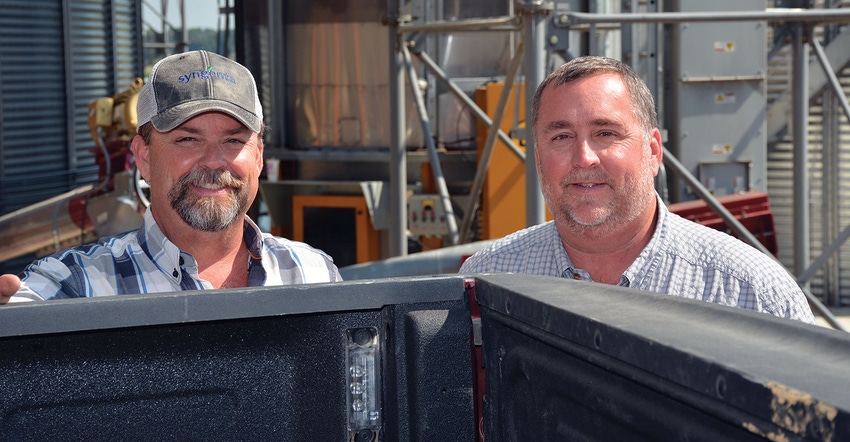
Jason Yarbro and his brother James took advantage of two weeks of fair weather to plant 2,200 acres of corn and 800 acres of soybeans on their Weakly County, Tenn., farm.
That's a start, but they need more good days to finish the 3,500 to 4,000 more acres of corn and the 5,500 to 5,600 acres of soybeans they hope to get planted.
"We took advantage of those two weeks," Jason says. "We had good weather, and since we can't go anywhere, not even to church, we just stay here and work.
"We're satisfied with where we are," he adds, "but the markets are killing us. We sold a little corn when it was a little higher."
He says they will store most of what they grow and wait for better prices. They have about 1 million-bushel storage capacity. "That's our best market option for now," Jason says. "Storage is a blessing."
In an August 2018 Delta Farm Press story (https://bit.ly/2yeUynW), Jason explained the importance of grain storage. He said storage bins perform increasingly important roles on the corn, soybean and wheat farm. For one thing, on-farm storage improves harvest efficiency, allowing combines to continue running while a fleet of trucks haul grain and beans the short distance to the bins.
Truck drivers
“One reason we built grain bins is that it was getting harder to find enough qualified drivers to run the trucks. Now, we can put it in the bins, dry it and deliver later. But we’re still looking for truck drivers. When the six or seven retired drivers we have now fully retire, I don’t know what we will do.”
He explained that they market on the board. “When the market gets to our targeted budget, we will begin hedging grain,” he says.
“We try to use a combination of the market carry and local basis to capture a 40-cent gain on local market prices on our corn. Some years we can, and some years we can’t.
“When we see a profitable price, we pull the trigger and deliver out of the bins. We will sell a lot at one time if the market is right."
Markets have changed in two years. He says markets were already low before the coronavirus shut down the economy. Ethanol production is down, a big factor in the corn market. "People are not driving. They are not even driving back and forth to Walmart, so gasoline demand is down." That means less ethanol and lower demand for corn.
"We were already anticipating another MFP payment before the virus," he says. "We also see that President Trump has told (Secretary of Agriculture) Sonny Perdue to get funds from the stimulus plan to farmers and ranchers. We need help. Cattle are also hurting. We wintered cattle and the virus hurt that market, too.
"It's concerning. It will take a long time to see markets get better. We have a big carryout in corn."
One of best crops ever
The 2019 crop, he says, was one of the best they've made, especially for corn. "We averaged better than 200 bushels an acre; that's hard to do and a good crop for us. We just can't get enough for it."
Yarbro says other than markets, the pandemic has not created severe hardships on the northwest Tennessee farm operation he and his brother run with his son Caleb and James' son Addison. "We've been able to get what we need, seed, fertilizer and equipment," he says.
He is concerned about keeping his workforce virus-free, however. "We want to keep them healthy," he says. With more than 10,000 acres in production, good labor is essential. "We don't want them to get sick."
The Yarbros employ about 10 full-time and eight or nine part-time workers. He says they realize that those employees have to be out in public occasionally. "They have to go to the store and do what's necessary to provide for their families," he says.
"We have encouraged them to follow what the government recommends about social distancing. We remind them that people they contact may infect them and then they bring it to the farm and infect other workers and our families."
Taking precautions
They are taking all the precautions they can.
"We practice social distancing as much as we can on the farm," he says. "We are also limiting people who come onto the farm. We think it doesn't make a lot of sense to ask our employees to avoid people as much as possible and still allow visitors on the farm."
He hopes to see the virus level off soon and wonders how long the economy can remain closed. He's also concerned that the pandemic could level off and then hit with another wave in the fall.
In the meantime, like farmers across the country, Jason, James, Addison and Caleb will continue to plant the 2020 crop, hoping to see the virus disappear, yields push above average again and markets move back where reasonable profits are possible.
About the Author(s)
You May Also Like






